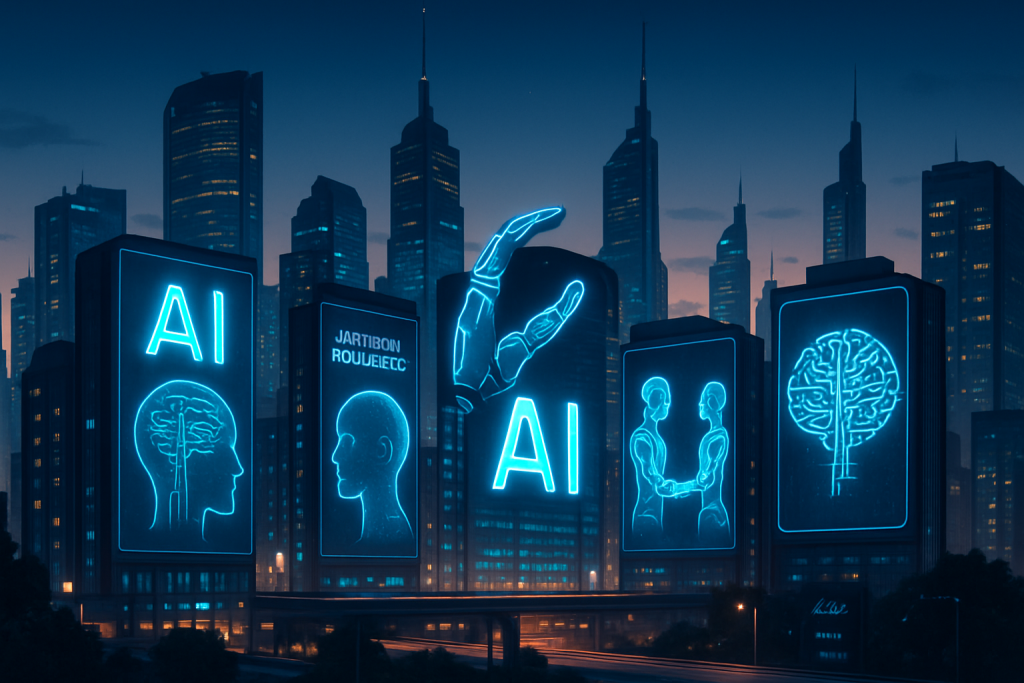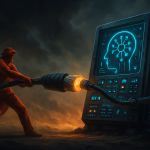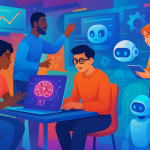Well, folks, buckle up. The AI rollercoaster just took another loop-de-loop. On June 7th, 2025, President Trump, in a move that’s sent ripples (or maybe tidal waves) through Silicon Valley and beyond, signed Executive Order 14179, a piece of legislation boldly titled “Removing Barriers to American Leadership in Artificial Intelligence.” Sounds pretty straightforward, right? But as with anything involving AI and politics, the devil’s in the details, and this one’s got more layers than an onion dipped in Inception.
To truly understand the significance of this move, we need a little history lesson. Think back to October 30, 2023. Remember that? Former President Biden, riding the wave of concerns about AI safety and ethical considerations, signed Executive Order 14110. Its mission? To ensure the “safe, secure, and trustworthy development and use of AI.” It was all about guardrails, responsible innovation, and making sure Skynet didn’t actually become Skynet. Fast forward to Trump’s first day back in office, and *poof*! Executive Order 14110 got the Thanos snap. This signaled a dramatic shift in the administration’s AI strategy, a clear pivot from caution to full-throttle acceleration. It’s like switching from cruise control to Ludicrous Mode in a Tesla.
So, what exactly does Executive Order 14179 do? In essence, it’s a giant eraser followed by a blank canvas. It wipes away previous AI-related policies deemed to be hindering U.S. innovation. Think of it as decluttering your digital desk, except instead of old spreadsheets, it’s regulations and compliance protocols. The order doesn’t just stop at deletion; it also mandates the creation of a comprehensive action plan. This isn’t some half-baked idea scribbled on a napkin during a Mar-a-Lago brunch. This is a full-blown strategic blueprint, due within 180 days, designed to keep America at the AI apex. The priorities? Human flourishing, economic competitiveness, and, of course, national security. Because in the age of AI, technological dominance is national security.
But wait, there’s more! Agencies are now under orders to scrutinize, and, if necessary, suspend, revise, or completely ditch any actions stemming from Biden’s executive order that clash with the new policy’s goals. Imagine the bureaucratic scramble! It’s like being asked to rewrite the ending of your favorite novel halfway through the sequel. And to ensure everyone’s singing from the same hymn sheet, the Office of Management and Budget (OMB) has 60 days to realign its memoranda to the new AI objectives. Talk about a tight deadline. You could probably train an AI to write those memos faster.
Now, let’s talk implementation. The National Coordination Office for Networking and Information Technology Research and Development (NITRD), working on behalf of the Office of Science and Technology Policy (OSTP), is asking for public input on this AI Action Plan. The deadline was March 15th, so hopefully, you got your two cents in. It’s a call for crowd-sourced wisdom, a digital town hall where anyone can weigh in on the future of AI in America. It’s like asking the internet to design the next iPhone- good luck with that, but hey, democracy in action!
What’s the big deal? Why is this more than just another executive order gathering dust on a shelf? Because it represents a fundamental shift in how the U.S. government views AI. It’s a bet, a gamble, that by removing perceived regulatory obstacles, the U.S. can unleash a torrent of AI innovation. The thinking is clear: fewer rules, faster progress. It’s a high-stakes game of technological leapfrog, aiming to catapult the United States to the forefront of global AI development, with the promise of economic growth and enhanced national security as the ultimate prize.
The implications are vast and varied. For tech companies, it’s a mixed bag. On one hand, less regulation could mean more freedom to experiment, to push the boundaries of what’s possible. On the other hand, it could raise concerns about ethical considerations, bias in algorithms, and the potential for misuse of AI. It’s the classic “with great power comes great responsibility” conundrum, Spiderman style.
From a political perspective, this executive order is a clear statement of intent. It’s a signal to the world that the U.S. is serious about AI, and it’s not going to let anything stand in its way. It also reignites the debate about the role of government in regulating emerging technologies. Should the government be a cautious referee, ensuring fair play and protecting consumers? Or should it be a cheerleader, encouraging innovation and letting the market sort things out? The answer, as always, is probably somewhere in the middle, but finding that sweet spot is the challenge.
Ethically, this raises some profound questions. How do we ensure that AI is developed and used in a way that benefits all of humanity, not just a select few? How do we prevent AI from perpetuating existing biases and inequalities? How do we safeguard against the potential for AI to be used for malicious purposes, like autonomous weapons or sophisticated surveillance systems? These are not just abstract philosophical questions; they are real-world challenges that demand thoughtful and urgent attention. The answers to these questions will shape not just the future of AI, but the future of our society.
Financially, the stakes are enormous. The global AI market is projected to be worth trillions of dollars in the coming years. Countries that lead in AI development will reap huge economic rewards, creating new jobs, industries, and opportunities. But the economic benefits are not guaranteed to be evenly distributed. There’s a risk that AI could exacerbate existing inequalities, creating a “winner-take-all” scenario where a few tech giants dominate the market, leaving everyone else behind.
So, where does all of this leave us? Executive Order 14179 is a bold move, a high-stakes gamble that could either propel the U.S. to AI supremacy or lead to unforeseen consequences. Only time will tell whether it was a stroke of genius or a recipe for disaster. But one thing is certain: the AI revolution is here, and it’s changing everything. All we can do is buckle up, pay attention, and hope that we’re steering this ship in the right direction. And maybe, just maybe, avoid a Terminator-style future.
Discover more from Just Buzz
Subscribe to get the latest posts sent to your email.


